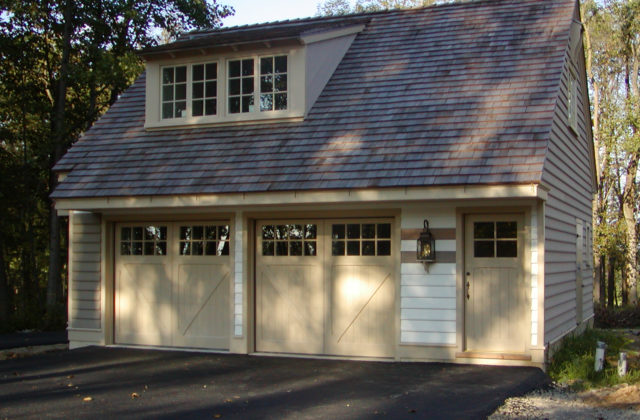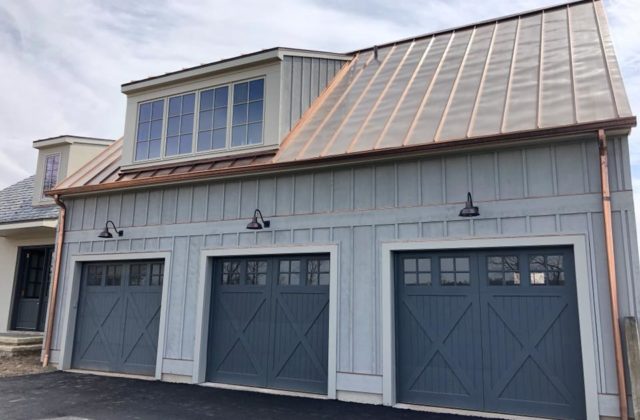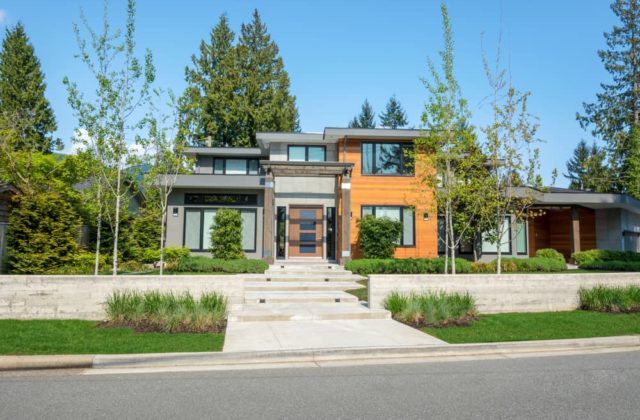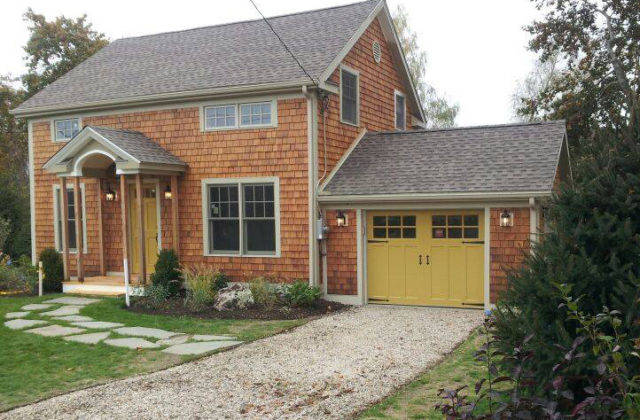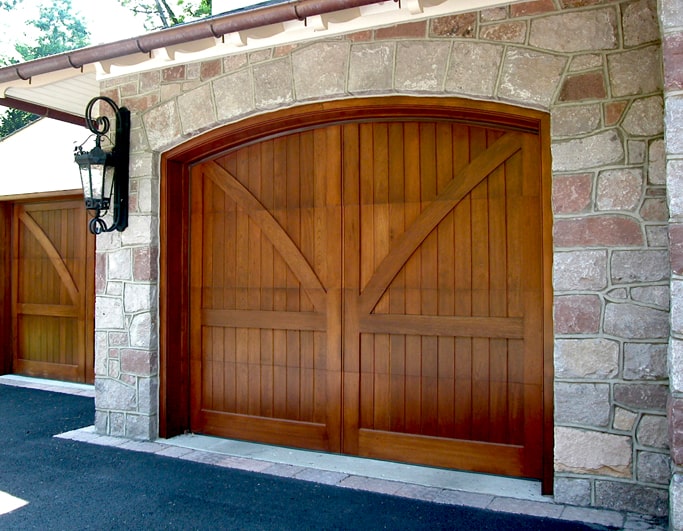
Almost 80% of homes have a garage door, so it’s become a common exterior feature. But do you know how the garage door came to be? The evolution of the carriage door is one of innovation and style.
After reading the timeline of carriage door history, you may have a unique perspective on your garage door and the history behind it.
How Did Carriage Doors Get Their Name?
Let’s start at the very beginning. The earliest carriage doors date back to medieval Europe and were typically on large estates and castles. And these doors deemed their name because they held large carriages and the horses that would pull them.
What Were These Doors Made Of?
The first carriage garage doors were made with wood panels and cross sections. The hardware was made from iron hinges and allowed the doors to swing outwards. They had to be large enough for the carriages to easily pass through.
Just like the carriage style now, these early doors had intricate designs such as criss-cross planking, large handles or ring pulls, and some even had windows.
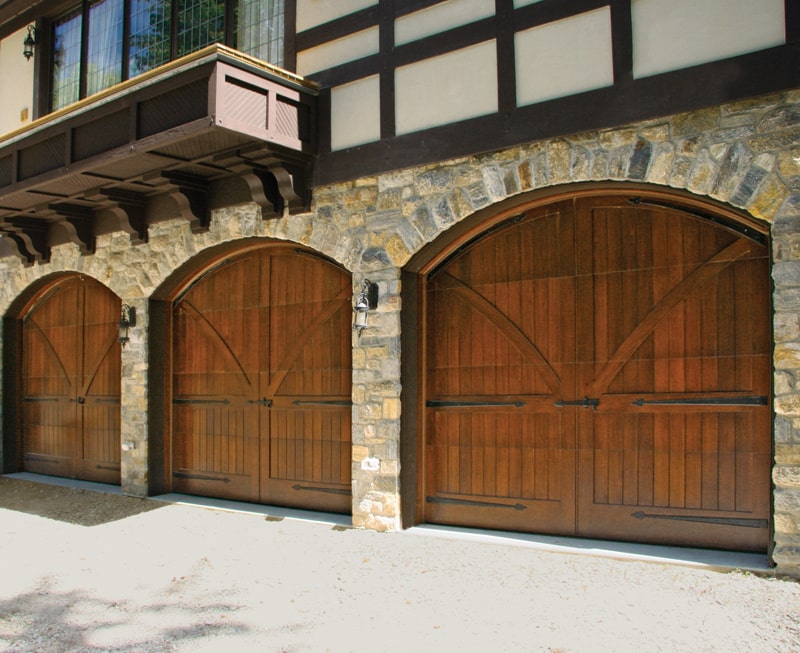
How Did Carriage Doors Evolve Once Cars Were Invented?
In the late 1880’s the first gas-engine automobile was invented. And the automobile continued to evolve from there. Eventually, wealthy homes had to find new solutions for where to store their vehicles.
Naturally, people started putting their automobiles in the same space as their carriages and horses. This caused quite a stink, literally. No one really loved the idea of keeping their new automobiles in the same space as their horses.
Then a man named C.G. Johnson came along. In 1921, he created the first overhead door once he saw the problem at hand. He found that an overhead, rolling-up garage door made it easier for vehicles to get in and out of the space.
It’s not too surprising that the Motor City was also the home to the first garage door. At first, garages were public or privately owned and an automobile owner could rent out a parking space.
The inconvenience of this eventually took over, so the wealthiest of homes were able to incorporate carriage-style garages on their property. Just like the carriage structures, the new garages were detached from the home.
In the same year that he invented the overhead garage door, C.G. Johnson and Owen Dautrick established one of the original carriage garage door manufacturer companies. They began producing these doors and eventually opened up their first plant in Detroit, Michigan.

What Happened When Styles Evolved?
Once people started wanting their garages closer to home, they also wanted a different style. Something that better suited the rest of their neighborhood or home. This is when garage doors started capturing similar styles as the home, and started to be unique to particular aesthetics.
The 1920s, 30s, and 40s
Popular styles in these three decades were a mixture of revival and modern architecture. During this time was also when people started connecting their garage space to the rest of the home so you could easily go in and out without actually going outside.
- Revival Architecture. This style brought a lot of terra-cotta, wood beams, and iron gates to the home. Which then transferred into the garage door. Arched windows were also a very popular style during this time, and arched garage doors became popular as well.
- Modern Architecture. After World War I, a new kind of style came to the home market, Art Deco. Which offered bright colors, geometric shapes, and polished surfaces. In garage doors, there were polished wood stains, geometric panels, and patterned windows.
The 1950s and 60s
Throughout the 50s and 60s, modern architecture continued to be a stand-out style, with geometric shapes and symmetric window panels. There were a lot of panels and squares in the garage doors, each with intricate designs or shapes.
By now, almost all homes had a connection to their garage space, and a majority of homes also had an electric garage door opener.
Before the 1950s, most homes only had one car, so they only needed a single garage door. However, in the next couple of decades, wealthier families started to own more than one vehicle. This meant that garage doors needed to be expanded or added onto in order to accommodate the extra vehicle.
The 1970s, 80s, and 90s
Up until the 1970s almost every historic garage door was made of wood. However, after this steel garage doors began to flood the industry. This allowed homeowners to get a door that looked good as well as a more durable option.
Other new materials were incorporated into the door as well. Aluminum and fiberglass meant that the garage doors were more insulated. Since more garages were being integrated with the home, better insulation allowed people to control the temperatures of their homes.
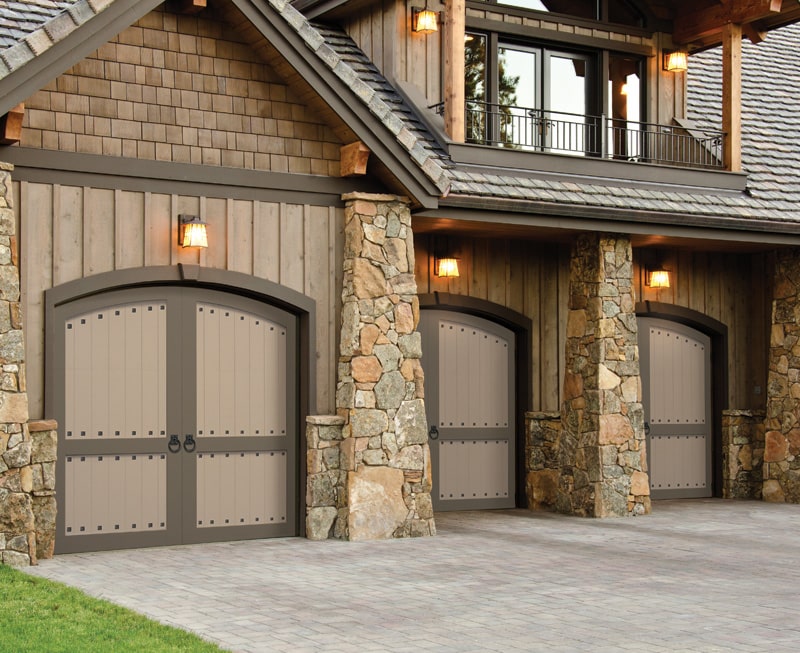
The Carriage Door Today
The carriage door evolution has grown just like every other industry. But how do the current styles, materials, and uses compare to the historic garage door? Below, we’ll highlight some of the key differences and how this piece of history has stayed the same.
Style
Throughout all the decades, we saw carriage door historical styles evolve into modern and contemporary steel and glass garage doors. However, history seems to be repeating itself. Wood carriage styles are regaining popularity and coming back as a common garage door style.
More often, we see arched doors or windows with intricate decorative hardware that mimics the carriage door’s historical style.
Materials & Accessories
Now more than ever, you can genuinely make your garage door stand out from the rest with a variety of styles and customization options. The same is true with materials. The classic wooden garage door is still a very popular choice, but you can also opt for composite wood, or vinyl.
And no matter what material you choose, the door is fully insulated.
Using Your Garage Space
As time has moved on, the garage space has become more than just a storage for your vehicles, or horse-drawn carriages. Now that you have an additional insulated room in your house, oftentimes it’s used as an extra living space, creative studio, or playroom.
Safety
Compared to historic garage doors, today’s garage doors are also much safer. Before, there wasn’t any safety feature that would stop the door if something was underneath it, which could result in damaged vehicles, or even injuries to you and your family.
Garage doors today have safety sensors on them that will stop the garage door from closing on anything underneath it.
Now that you know a little bit more about carriage door history, maybe you want to incorporate a piece of this history into your home. Maybe that’s through arched doorways, symmetrical window panels, or decorative hardware.
